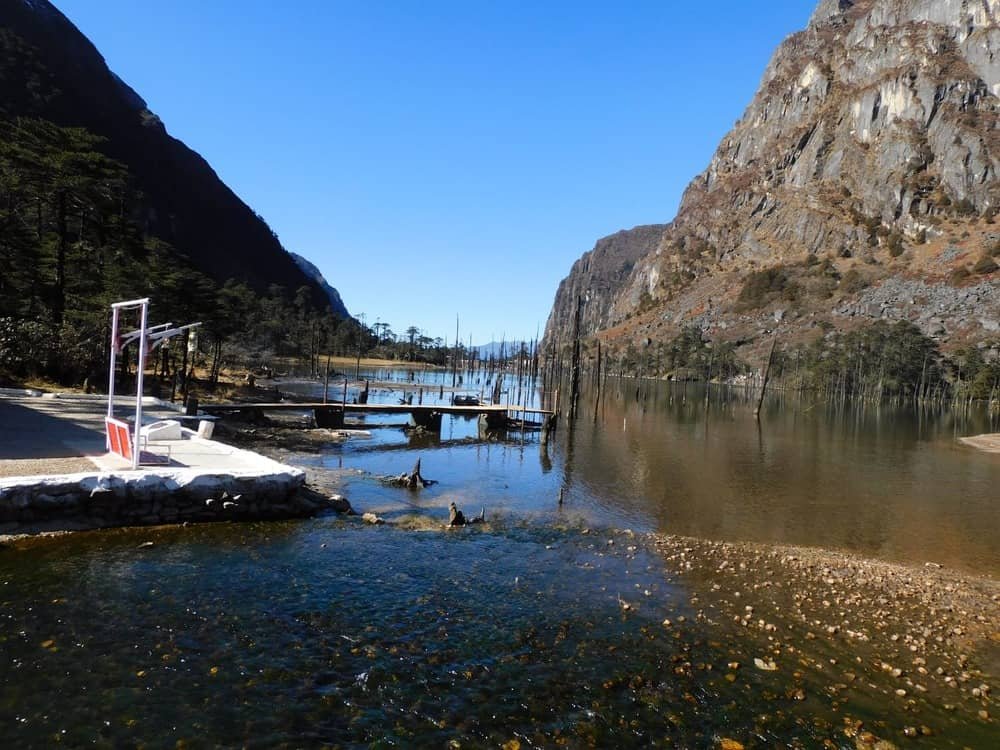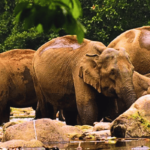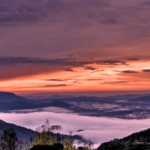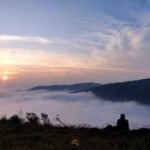Tawang, nestled in the enchanting landscape of Arunachal Pradesh is a place of awe-inspiring beauty and cultural significance. Tawang’s history unfolds like an ancient scroll, intertwining tales of spirituality, heritage, and resilience. Tawang found itself at the crossroads of cultural exchanges, with influences from Tibet, India, and beyond shaping its identity. The region’s strategic location also made it a focal point during conflicts, notably the 1962 Indo-China war. Today, Tawang stands as a living testament to its storied past, where traditions persist alongside modernity, and where the echoes of history resonate through its landscapes and monuments.
How to Reach Tawang?
Tawang is a town located in the Indian state of Arunachal Pradesh. It’s a remote and beautiful destination nestled in the eastern Himalayas. Since my knowledge was last updated in September 2021, please verify the information before planning your trip, as travel details might have changed. Here’s a general guide on how to reach Tawang:
By Air: The nearest major airport to Tawang is Tezpur Airport (Salonibari Airport) in Assam, which is approximately 320 kilometers away. From the airport, you would need to travel by road to reach Tawang.
By Train: The nearest railway station to Tawang is Tezpur Railway Station, which is connected to various major cities in India. However, Tawang doesn’t have a direct rail link, so you would need to rely on road transport from Tezpur to reach Tawang.
By Road: Most visitors reach Tawang by road. The road journey to Tawang is known for its scenic beauty but can be challenging due to the mountainous terrain and varying weather conditions. The most common route is as follows:
- Start from Guwahati, Assam.
- Drive to Tezpur (about 180 kilometers from Guwahati).
- From Tezpur, drive to Bomdila (about 160 kilometers from Tezpur).
- Finally, drive from Bomdila to Tawang (about 180 kilometers from Bomdila).
This route takes you through picturesque landscapes and passes through Sela Pass, which is a high-altitude pass renowned for its beauty.
Permit Requirements:
Arunachal Pradesh, including Tawang, requires non-residents to obtain an Inner Line Permit (ILP) to enter the state. Indian citizens from other states can apply for this permit online or in person at various offices, including those in Guwahati and Tezpur. Foreign tourists need to apply for a Protected Area Permit (PAP) in advance.
Travel Considerations:
Due to the challenging road conditions and the high altitude of Tawang, it’s recommended to plan your journey carefully and consider acclimatization to avoid altitude sickness. Also, keep in mind that weather conditions in the region can be unpredictable, and roads might be affected by landslides during the monsoon season.
Before traveling, make sure to check the most recent travel information, road conditions, and permit requirements, as these details can change. It’s also advisable to contact local authorities or tour operators for the latest information and assistance with your travel plans.
Here’s the list:
1. Tawang Monastery: Tawang Monastery, also known as Galden Namgyal Lhatse, is a revered cultural and spiritual site nestled amidst the breathtaking landscapes of Tawang. This iconic monastery offers visitors a unique opportunity to immerse themselves in the rich Tibetan Buddhist heritage of the region. Steeped in history, the monastery houses intricate murals, ancient scriptures, and a towering three-story assembly hall. Exploring the complex allows you to witness the monks’ daily rituals, gain insights into Buddhist philosophy, and marvel at the stunning architecture that beautifully combines traditional Tibetan design with local influences.
2. Sela Pass: Sela Pass, a high-altitude mountain pass on the way to Tawang, is a natural wonder that captivates travelers with its awe-inspiring beauty. At an elevation of around 13,700 feet, this pass offers a surreal experience as you traverse through a landscape adorned with pristine lakes, snow-capped peaks, and meandering roads that seem to touch the sky. One of the key attractions is the frozen Sela Lake, surrounded by snow during the winter months. The pass also holds immense cultural significance, with the Sela Temple dedicated to the local deity.
3. P.T. Tso Lake (Pankang Teng Tso):
P.T. Tso Lake, also known as Pankang Teng Tso, is a hidden gem nestled in the tranquil landscapes near Tawang. This pristine alpine lake offers a serene escape where visitors can immerse themselves in nature’s beauty. Surrounded by verdant hills and snowy peaks, the lake’s crystal-clear waters mirror the changing hues of the sky, creating a picture-perfect scene. Travelers can take leisurely strolls around the lake’s perimeter, capturing breathtaking photographs and relishing the tranquil atmosphere.
4. Bum La Pass: Bum La Pass, a high mountain pass located near Tawang, presents adventurers with a unique opportunity to experience the rugged beauty of the Himalayas. This pass is not just a geographical wonder, but also a historical site that marks the India-China border. The journey to Bum La Pass takes you through challenging terrains, picturesque landscapes, and offers glimpses of rare wildlife. As you reach the pass, you’ll be rewarded with panoramic views of snow-covered peaks and a sense of accomplishment. It’s essential to note that visiting the pass requires obtaining special permits due to its proximity to the border.
5. Gorichen Peak: Gorichen Peak, often referred to as “The White Giant,” stands as one of Arunachal Pradesh’s most iconic and challenging peaks. Nestled amidst the Eastern Himalayas, this majestic summit beckons mountaineers and nature enthusiasts alike. Scaling Gorichen is a feat that rewards climbers with breathtaking views of the surrounding valleys and ranges. The climb is not just a physical endeavor, but also an exploration of the region’s biodiversity, with diverse flora and fauna gracing the lower slopes. As you ascend, you’ll encounter a sense of accomplishment unlike any other, standing atop a mountain that connects you to both the earth beneath and the vast sky above.

6. Nuranang Waterfall (Jung Falls):
Nuranang Waterfall, also known as Jung Falls, is a mesmerizing natural wonder located near Tawang. Cascading down from a height of about 100 meters, this enchanting waterfall is a sight to behold. The journey to Nuranang offers a scenic drive through picturesque landscapes, Nuranang Waterfall offers a peaceful escape into nature’s beauty and a chance to rejuvenate amidst the serene surroundings.
7. Jaswant Garh War Memorial: Jaswant Garh War Memorial stands as a tribute to the brave soldiers who defended the nation’s honor during the 1962 Sino-Indian War. Located near Tawang, this memorial is a poignant reminder of the sacrifices made by the Indian Army. Visitors can pay their respects at the memorial and gain insight into the history of the region. The stories of valor and resilience come to life as you explore the site, which includes a museum showcasing artifacts and photographs from the war.
8. Tawang Craft Centre: The Tawang Craft Centre is a cultural treasure trove nestled in the heart of Tawang. This center serves as a vibrant showcase of the region’s rich artistic heritage, offering visitors a chance to witness the craftsmanship of the local Monpa community. Here, you can explore a wide array of traditional crafts, including intricately woven textiles, handcrafted carpets, intricately carved wooden artifacts, and exquisite thangka paintings. Engaging with the artisans, you can gain insights into their techniques and cultural significance.
9. Gyangong Ani Gompa: Gyangong Ani Gompa is a peaceful haven that offers a glimpse into the spiritual life of Buddhist nuns. This charming nunnery provides a unique opportunity to witness the devotion and dedication of the nuns as they lead a life of meditation and religious practice. The surroundings exude tranquility, creating a serene atmosphere that encourages reflection. Visitors can interact with the nuns, learn about their way of life, and gain insights into Buddhist teachings.
10. Tawang War Memorial:The Tawang War Memorial stands as a solemn tribute to the brave soldiers who laid down their lives during the 1962 Sino-Indian War. Situated in the scenic town of Tawang, this memorial is a poignant reminder of the sacrifices made to protect the nation’s borders. The towering structure and its surrounding complex hold names of the fallen heroes, eternalizing their memory. The museum within the memorial offers insights into the history of the war and the challenges faced by the soldiers.
11. Tawang War Memorial Light and Sound Show: If available, attend the evening light and sound show at the Tawang War Memorial. It’s a moving experience that narrates the stories of the war heroes.
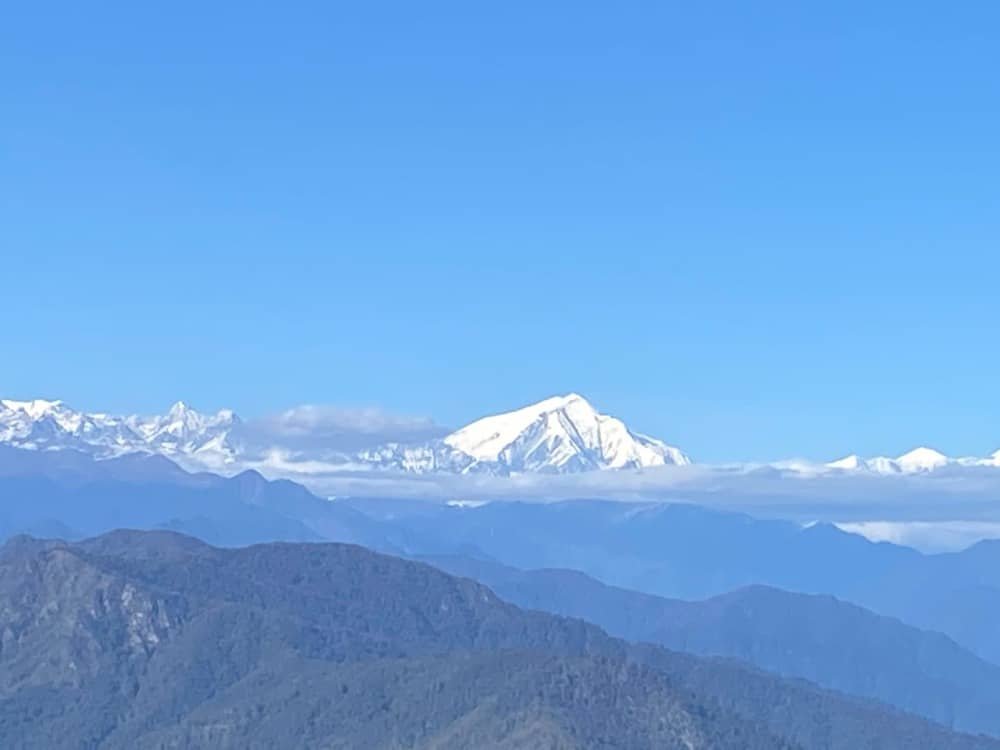
12. Local Cuisine Exploration: Exploring the local cuisine is an integral part of any travel experience, and Tawang offers a delightful culinary journey. The region’s cuisine is a blend of traditional Monpa flavors and influences from neighboring regions. One of the highlights is the hearty traditional dish called “Thukpa,” a noodle soup often prepared with vegetables, meat, and fragrant spices. Another must-try is “Momos,” delicious dumplings filled with meat or vegetables, served with tangy dipping sauces. Don’t miss out on “Zan,” a nutritious porridge made from barley or millet. For those with an adventurous palate, “Khura” (dried cheese), “Chhurpi” (fermented cheese), and “Gyapa Khazi” (fried meat) are local specialties worth trying. Sweet treats like “Apong,” a local rice beer, and “Khapse,” deep-fried dough sweets, provide a flavorful end to your culinary exploration.
13. Trekking and Adventure Sports: Tawang is an ideal destination for trekking and adventure sports enthusiasts. The region offers a variety of trekking trails, ranging from moderate to challenging, that lead through dense forests, serene meadows, and high-altitude passes. The most popular trek is the Bum La Pass trek, which takes you to the India-China border and offers stunning vistas along the way. For those seeking an adrenaline rush, river rafting in the Tawang Chu River provides an exciting experience. During winter, the snow-covered terrain is perfect for skiing and snowboarding. Paragliding enthusiasts can enjoy panoramic views of the Himalayas while soaring through the sky.
14. Visit Tawang Market: Visiting Tawang Market is an enriching way to immerse yourself in the local culture and daily life of this Himalayan town. The market offers a vibrant tapestry of colors, scents, and sounds, as locals gather to buy and sell their wares. From fresh produce to handcrafted souvenirs, you can find a diverse range of items that reflect the region’s identity. Strolling through the market, you can interact with friendly locals, sample local snacks and sweets, and engage in a bit of bargaining. Don’t miss the chance to explore the stalls offering traditional textiles, handicrafts, and jewelry that carry the essence of Tawang’s craftsmanship. Visiting Tawang Market is not just a shopping experience, but a chance to connect with the community, witness the authenticity of daily life, and take home a piece of the town’s vibrant spirit.
15. Festivals: Attending festivals in Tawang is a gateway to experiencing the cultural vibrancy and traditions of the region. One of the most significant festivals is the Tawang Festival, celebrated in October with grand parades, traditional dances, and local cuisine exhibitions. The Losar Festival marks the Tibetan New Year, showcasing vibrant rituals, masked dances, and community gatherings. During the Monpa festival of Torgya, you can witness colorful performances and rituals at the Tawang Monastery. The Choekhor Festival celebrates the birth anniversary of Guru Padmasambhava and features religious ceremonies, cultural performances, and masked dances.
Tawang is best visited from late March to early October when the weather is relatively mild and the roads are accessible. Avoid the monsoon season (June to September) due to heavy rainfall and the winter months (November to February) when the region experiences heavy snowfall and extremely cold temperatures
Indian tourists from outside Arunachal Pradesh need to obtain an Inner Line Permit (ILP) to enter Tawang. Foreign tourists must apply for a Protected Area Permit (PAP). These permits can be obtained online or in-person at designated government offices in Assam or Arunachal Pradesh.
Tawang offers a range of attractions, including the Tawang Monastery (Galden Namgyal Lhatse), Sela Pass, Jaswant Garh War Memorial, and the Nuranang Waterfall. Each of these places showcases the natural beauty, cultural heritage, and historical significance of the region.
The most common route is to travel from Guwahati to Tezpur by road or rail, then proceed to Tawang via Bomdila. The journey is long but offers stunning views of the Himalayan landscapes. Remember that road conditions can vary, so plan for potential delays.
Tawang can be a great destination for solo travelers, offering unique experiences, scenic landscapes, and cultural immersion. However, due to the remote location and challenging terrain, it’s advisable to plan ahead, stay informed about weather conditions, and communicate your travel plans with someone reliable.
Tawang offers a range of accommodation options, including hotels, guesthouses, and homestays. These options cater to various budgets and preferences. It’s recommended to book your accommodation in advance, especially during peak tourist seasons, to ensure availability.
Author - Shirky
Shirky is a passionate traveler, He keeps exploring the world and sharing his experiences through captivating storytelling. Through his leadership, Muddie Trails has become an advocate for responsible travel, leaving a positive impact on both the environment and the local communities.
Dandeli Tour Packages, Munnar Tour Packages, Gokarna Murudeshwar Honnavar Tour, Kodiakanal Tour Packages , Kotagiri and Conoor Tour Packages, Coorg Tour Packages, Ooty Tour packages, Wayand Tour Packages, Chikmagalur 2 days tour packages, Agumbe Tour Packages, Malvan Scuba Diving, Coorg Long Weekend Tour Packages, Mulki Kayaking Packages.
Sikkim Tour Packages(6D/5N), Nagaland Tour Packages with Dzukou Valley, Meghalaya Tour Packages(No Trekking), Hornbill Festival Tour With Dzukou Trek- Nagaland (6D/5N), Nagaland Backpacking Trip With Dzukou Valley Trek (6D/5N), Meghalaya Backpacking Trip(6D/5N), Tawang Backpacking Trip (7D/6N), Sikkim Backpacking Trip (6D/5N), Tawang Private Trip, Kaziranga National Park Safari (2D/2N),
